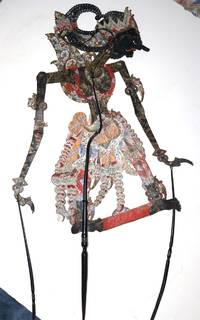Carousel content with 1 slides.
A carousel is a rotating set of images, rotation stops on keyboard focus on carousel tab controls or hovering the mouse pointer over images. Use the tabs or the previous and next buttons to change the displayed slide.
-
 Slide 1:
Slide 1:
-
 Slide 2: no title
Slide 2: no title -
 Slide 3: no title
Slide 3: no title -
 Slide 4: no title
Slide 4: no title -
 Slide 5: no title
Slide 5: no title -
 Slide 6: no title
Slide 6: no title -
 Slide 7: no title
Slide 7: no title -
 Slide 8: no title
Slide 8: no title -
 Slide 9: no title
Slide 9: no title -
 Slide 10: no title
Slide 10: no title -
 Slide 11: no title
Slide 11: no title -
 Slide 12: no title
Slide 12: no title -
 Slide 13: no title
Slide 13: no title -
 Slide 14: no title
Slide 14: no title -
 Slide 15: no title
Slide 15: no title -
 Slide 16: no title
Slide 16: no title -
 Slide 17: no title
Slide 17: no title -
 Slide 18: no title
Slide 18: no title -
 Slide 19: no title
Slide 19: no title -
 Slide 20: no title
Slide 20: no title -
 Slide 21: no title
Slide 21: no title -
 Slide 22: no title
Slide 22: no title -
 Slide 23: no title
Slide 23: no title -
 Slide 24: no title
Slide 24: no title -
 Slide 25: no title
Slide 25: no title -
 Slide 26: no title
Slide 26: no title -
 Slide 27: no title
Slide 27: no title -
 Slide 28: no title
Slide 28: no title -
 Slide 29: no title
Slide 29: no title -
 Slide 30: no title
Slide 30: no title -
 Slide 31: no title
Slide 31: no title -
 Slide 32: no title
Slide 32: no title -
 Slide 33: no title
Slide 33: no title -
 Slide 34: no title
Slide 34: no title -
 Slide 35: no title
Slide 35: no title -
 Slide 36: no title
Slide 36: no title -
 Slide 37: no title
Slide 37: no title -
 Slide 38: no title
Slide 38: no title
Orihan, or concertinas, with card thick endpieces. Outer portfolio with sting ties
1805 · Japan
by Kagen, Niwa (1742-1786)
Japan, 1805. Orihan, or concertinas, with card thick endpieces. Outer portfolio with sting ties. Very Good. Niwa Kagen. A set of matching bindings surveying the fine color woodblocks encapsulating the versatile work of Japanese artist Niwa Kagen. We believe these woodblocks to have been early re-strikes of the original woodblocks. Each volume is 28 by 15 cm when closed, and the format is a typical Japanese orihan, or accordian, style. 40 woodblock prints altogether in the five volumes, almost all of them double paneled or double paged. Volume 1 has 22 panels, which include six woodblocks, 28.5 by 24 cm -- we are not including margins -- of views and (truncated) landscapes. We see mountains, craggy outcroppings, village hamlets, rustic settings, occasional people. The color is spare, the outlines, most economical, with clever choice of detailing. Ten pages of calligraphic text. This is in additional with calligraphic captioning with each of the woodblockis. Volume 2 comes with ten color woodblocks of human portraits and genre scenes. The scenes include pilgrims, river activity, an authority figure at a desk with an assistant or petitioner, people with a big cat, one with a dog barking at a frightened man. Only two pages with pure text, although one of the woodblock has text captioning take up the entirety of one of the panels. Volume 3 is devoted to birds, with eight woodblocks, two pages of calligraphy. The color used here is decidedly richer, although not bright by any means. Volume 4 has nine woodblocks, seven capturing animals other than birds, and three, botanical studies. The latter is artwork that brings to mind many a vertical wall hanging. The color is incidental, and in one case, there is none at all. The artwork verges on the abstract, and is closely allied with calligraphy, we would say. The animal studies show the animals in action. In one, a boy rides a dolphin; in another, spiders dangle from a tree as frogs and a crab watch. Our favorite among these is that of a cat glaring at a turtle. Finally, Volume 5 has seven woodblocks of fruits and vegetables. These include groupings, but also ones of a single item. The color of these can be the most vibrant of these woodblocks. This volume has eight pages of just calligraphy. Light soilng to the covers. Minor closed tearing at a few panel folds. Generally the volumes are well-preserved. The outer case is split along one of its folds. We think this is a later addition, and with the typed title label (English title that is improvisational, not a translation of the Japanese) that is none too attractive, one might choose to discard this casing entirely, although the avian pattern has some appeal.
(Inventory #: 20317)


